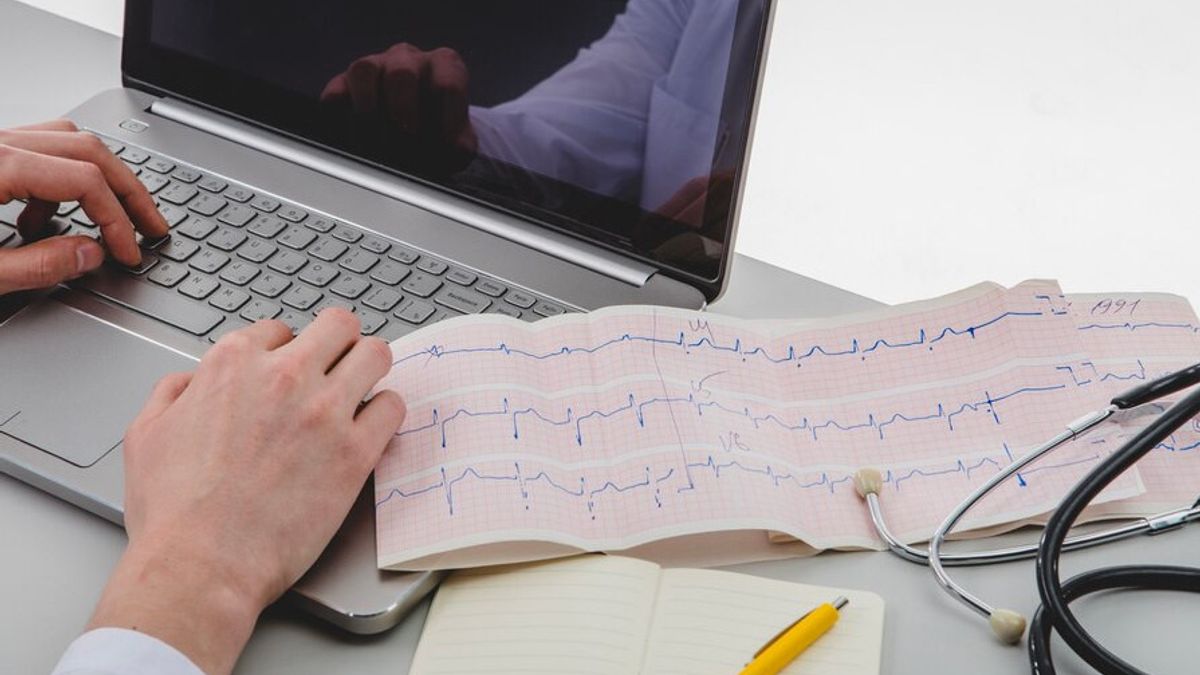YOGYAKARTA The rhythm of the heartbeat is irregular, or too fast, too slow, and irregular, is called arrhythmia. The heart work system controls the complex valve system, nodes, and space. If this system is disturbed, then the beat of the rhythm changes.
It is important to understand, arrhythmias may not be recognized for symptoms. But usually if you experience discomfort, chest palpitations, chest pain, shortness of breath, dizziness, fatigue, and fainting. Even so, arithmetic is divided into several types. Not all can threaten your life but there are also those that can cause complications. So if you experience the general symptoms above, it is necessary to immediately check with the doctor.
The rhythm of irregular heartbeats has several types, including the following below:
Takikardia means the heart is beating too fast. The normal heart beats 60-100 times per minute in adults. Meanwhile, when experiencing takicardia, the heart rate breaks more than normal speed.
There are three takikardia subtypes, namely takikardia sinus, takikardia supraventricular, and takikardia ventricle. Takikardia sinus is an increase in heart rate that occurs as a response, such as exercise, pain, dehydration, joy, fever, or disease.
Takikardia supraventricular, comes from the upper room of the heart known as atrium. The third subtype, takicardia ventricle, is a very fast heart rate and occurs in the subspace or so-called ventricles.
This type, the most common arrhythmia experienced, is atrium fibrillation. Atrium fibrillation occurs in the upper ventilation of the heart, also known as AFib. Occurs when many unstable electrical pulses are not working properly, causing your atrium to vibrate irregularly. This condition causes the rhythm of the heartbeat to become irregular and can increase up to 80-180 times per minute.
Atrial flutter usually occurs in the right atrium, one of the two upper chambers of the heart. Atrial flutter can also occur in the left atrium. Atrial flutter is an arrhythmia type derived from atrium and causes a fast atrium orama. Reported by Healthline, Monday, July 29, this is due to circuits of electrical activity being abnormal so that heart beats are often faster. Atrial flutter can also increase the risk of stroke.
If you have a Brikardia, your heart rate is slow or less than 60 bpm. Brikardia generally occurs when the electric signal running from atrium to ventricle is disrupted.
This condition is experienced by several athletes because they are in good physical condition, not due to problems from the heart. Brikardia, caused by hypothyroidism, hypothermia, heart condition, and others.
SEE ALSO:
ventricle fibrillation is life-threatening arrhythmia in which ventricles beat fast and are irregular. This interferes with the flow of blood from the heart and causes a heart attack. This condition can become serious and if not treated causes defibrillation.
Premature contraction is an early pulse due to contraction that occurs in atrium or in ventricles. In both cases, when feeling a pulse, it may seem as if the heart has stopped beating.
In addition to the importance of checking when experiencing the symptoms mentioned above, it is also important to understand the risk factors that cause rhythm of the heartbeat to be irregular. Affecting factors include high blood pressure,tender heart disease, damage and heart problems, or injuries to the heart muscle.
The English, Chinese, Japanese, Arabic, and French versions are automatically generated by the AI. So there may still be inaccuracies in translating, please always see Indonesian as our main language. (system supported by DigitalSiber.id)













